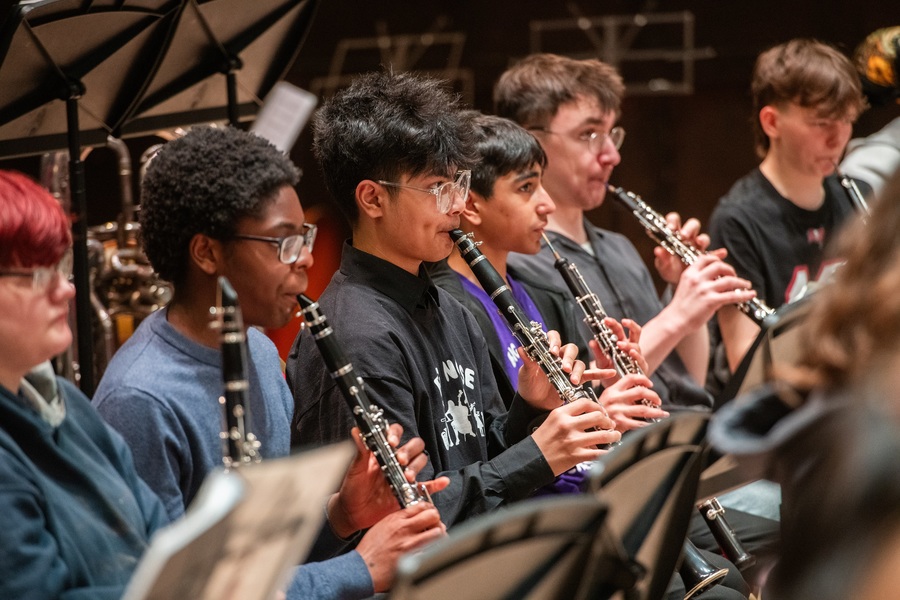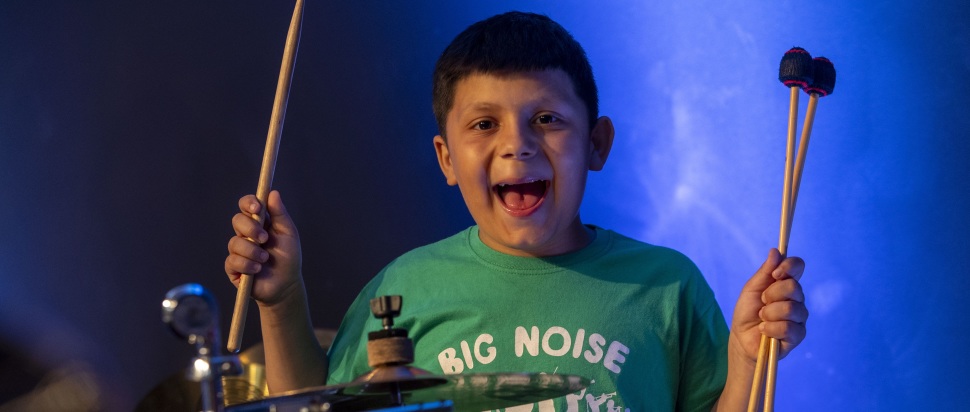Harmony is Happening: Govanhill's Big Noise project
Govanhill’s Big Noise project offers a masterclass in community cohesion, we catch up with Alison Gornall to find out more
Anyone walking into the Big Noise centre in Govanhill will think the same thing – “where is that music coming from?” The answer is: everywhere. As I’m shown round by Alison Gornall, the Head of Centre, we pass through myriad rooms and rehearsal spaces, all filled with kids playing music. A string section practises scales, the younger members almost comically squaring up to double basses which tower over them. The older kids are playing longer, more complex pieces. The theme from Pirates of the Caribbean is a notable highlight. There are no raised voices, no aggro, no phones in sight. Just a seemingly endless parade of kids of all ages, all ethnicities, all talents, getting stuck into rehearsals.
Big Noise grew from a fact-finding mission to Venezuela in 2007 to see the groundbreaking El Sistema programme in action in the land where it was created. Founded by José Antionio Abreu, the mission of El Sistema was simple: to offer free classical music education to those who could normally never afford it. This inspired the foundation of Big Noise in Scotland, first in Stirling's Raploch, and then in Govanhill in 2013. Gornall explains to me the way the programme works, and why Govanhill felt like the right place for a Glasgow base.
“Govanhill is somewhere that is quite easy to define as a community. People who live here have a strong sense of belonging to that community. But it has struggled for a variety of reasons, whether that be income-based or the opportunities available. So Govanhill seemed like a really interesting place for Big Noise to be based. It’s the most diverse community in Scotland, a massive melting pot. And people come here for different reasons, whether because their family is here, or coming to study or work. And we see the challenges those people face, poor housing, and low income levels.”
Govanhill is certainly an area which has faced tensions over recent years. It’s a community built on immigration over the centuries, from the Highlands and Ireland, from south Asia, and from Romania and Slovakia. Over 50 languages are spoken within the community, and the complex intersection of issues, from poverty to education to employment, can sometimes be measured on a street-to-street basis. Given these challenges, is the idea of music as a “common language” a reality, or just a cliché? Can so many communities come together in a way that is meaningful? Gornall is unequivocal.

Image courtesy of Big Noise.
“Absolutely, music is a common language. It’s a leveller. People can find joy in music, be moved by it – not just listening to it, but crucially by participating. We live in a sound world, and kids can find common ground in that. Of course, we teach the technical stuff, learning to read music and so on. But really, it’s about participation. And often we’ll be looking to the community here to find new music that they want to hear from their cultural traditions. The key thing is that it is a shared experience. You and I can listen to something together, and even if we don’t speak the same language, we’ll be feeling it together.”
Arguments around gentrification abound in Govanhill, as they do in many areas of Glasgow where traditionally poorer areas meet more affluent buyers ready to find a bargain. Big Noise have had to take a firm stance on which geographical areas and which school catchments qualify for their support. And while some communities integrate more quickly than others, the Roma community in Govanhill has been particularly targeted for abuse, racism, and rumours. I wondered whether Big Noise worked for the Roma community as well as it did with other minority groups?
“We have good uptake from our Roma community, though we do sometimes struggle when it gets to the teen years," Gornall says. "But we have found that even if people drop off the radar for a few years, we can then reengage with them down the line. And the Roma community has an incredible musical history and culture of outstanding musicians. While there might be differences – they might have more of an oral tradition, for example – we have successfully managed to build relationships with those families.”
We live in a world where anti-immigrant rhetoric, in the press and from politicians, is increasingly on the rise. Projects such as Big Noise give us a way to fight back against that, showing once again the old truth that we have more in common than that which divides us. Building those relationships takes time, and Big Noise are committed to Govanhill for the long term. It’s an inspiring project which reflects the pride, tradition, and history of an often maligned area of Glasgow. As I leave, I can hear the faint sound of strings echoing around the centre. Music is everywhere, a common language which anyone can learn to speak.
